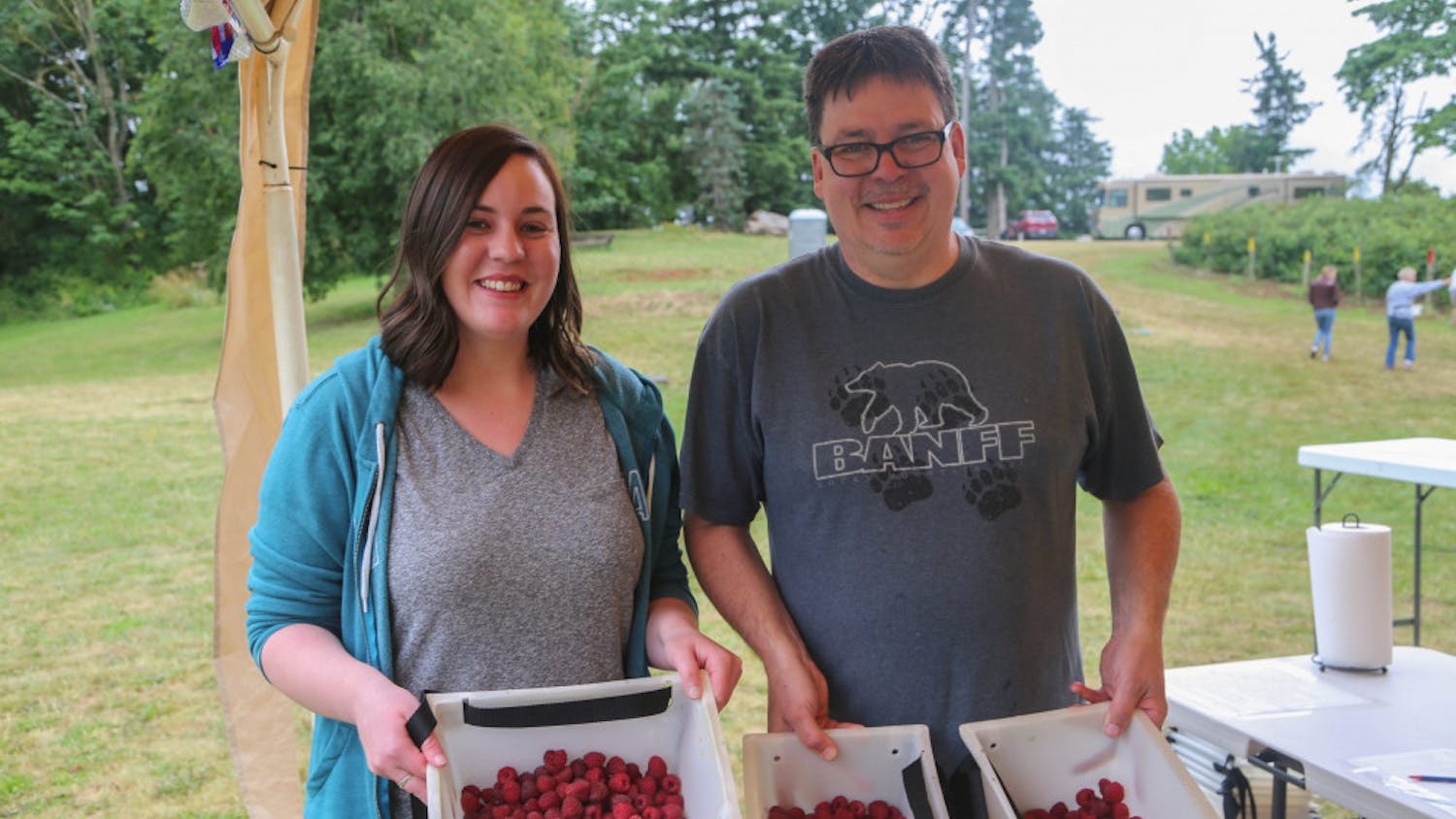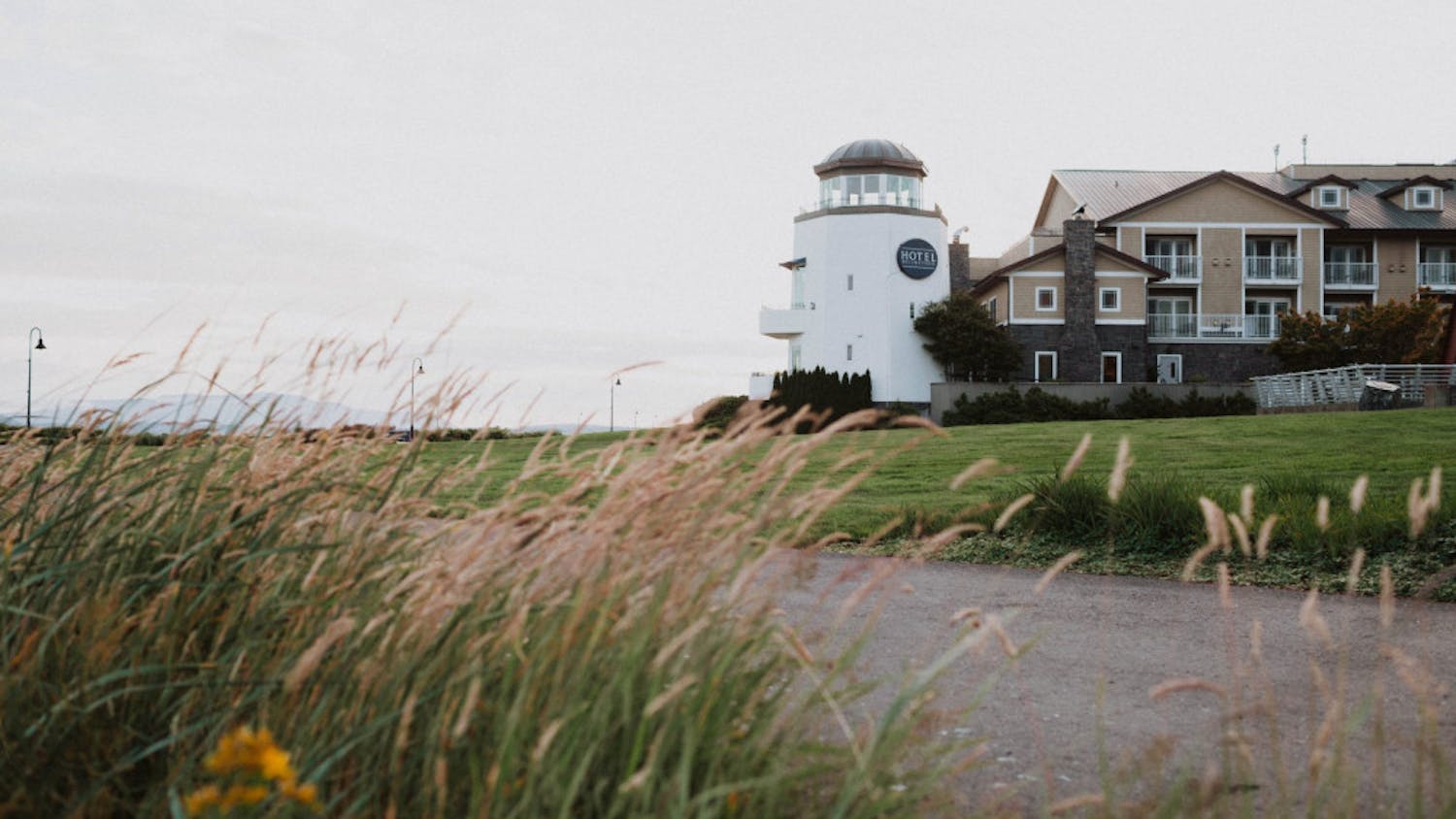 Pam Bakke loves color and patterns. She shares the joy she finds in these visual worlds through her artwork, a unique style called “paste paper.”
Paste papers and books go together beautifully, and their overall appearance has an almost “bookish” style, as if they are designated to be used alongside text. It’s easy to see why there may be an association between paste papers and books, because they are often used as book covers and book ends.
“I think I’ve been an artist my whole life,” Bakke said. She first got interested in the art of paste papers 20 years ago, while attending Western's Book Arts Program.
After she had left the class, she attempted to recreate what she’d learned.
“I went home and made myself some pastes,” she said. “But I ran out of paper. So
I took the paper I had already painted on, ironed them out to make them smooth again and put another layer of paste and paint on top of it.”
Bakke believes she’s one of the only people who has discovered this multi-layered technique of making paste paper, and has been told by others that her style is unique. She layers up to seven times to create the look she wants.
“So, when you look at my paste papers, there’s depth. It was an accident out of necessity,” Bakke said.
“I was looking all over the world, for people to teach me, she said. “There isn’t anybody who knows what the heck [this type of art] is.”
Pam Bakke loves color and patterns. She shares the joy she finds in these visual worlds through her artwork, a unique style called “paste paper.”
Paste papers and books go together beautifully, and their overall appearance has an almost “bookish” style, as if they are designated to be used alongside text. It’s easy to see why there may be an association between paste papers and books, because they are often used as book covers and book ends.
“I think I’ve been an artist my whole life,” Bakke said. She first got interested in the art of paste papers 20 years ago, while attending Western's Book Arts Program.
After she had left the class, she attempted to recreate what she’d learned.
“I went home and made myself some pastes,” she said. “But I ran out of paper. So
I took the paper I had already painted on, ironed them out to make them smooth again and put another layer of paste and paint on top of it.”
Bakke believes she’s one of the only people who has discovered this multi-layered technique of making paste paper, and has been told by others that her style is unique. She layers up to seven times to create the look she wants.
“So, when you look at my paste papers, there’s depth. It was an accident out of necessity,” Bakke said.
“I was looking all over the world, for people to teach me, she said. “There isn’t anybody who knows what the heck [this type of art] is.” Bakke has taken about 90 credits in book-binding and book arts from Western, and attended classes at the Oregon College of Arts and Crafts. Even there, experts in paste papers are scarce, though she had one professor from California and another from London who knew the craft.
It’s a distinct art form, requiring patience, experimentation and an eye for the overall picture.
“I don’t like to give up,” Bakke said. “I have tenacity. I say ‘well, this didn’t work the first time, second time or the third time. But I know something good is coming—maybe the tenth layer on this piece of paper.’”
Inspiration
“I get inspiration in a lot of different places,” she said. “Nature. There’ so many patterns. If you go outside right now, or looked out the window and looked down at the leaves on the bricks—that’s a beautiful carpet and that’s a pattern.”
Bakke has taken about 90 credits in book-binding and book arts from Western, and attended classes at the Oregon College of Arts and Crafts. Even there, experts in paste papers are scarce, though she had one professor from California and another from London who knew the craft.
It’s a distinct art form, requiring patience, experimentation and an eye for the overall picture.
“I don’t like to give up,” Bakke said. “I have tenacity. I say ‘well, this didn’t work the first time, second time or the third time. But I know something good is coming—maybe the tenth layer on this piece of paper.’”
Inspiration
“I get inspiration in a lot of different places,” she said. “Nature. There’ so many patterns. If you go outside right now, or looked out the window and looked down at the leaves on the bricks—that’s a beautiful carpet and that’s a pattern.” Creating without a plan or outline, she finds enjoyment in watching the art happen. As for what constitutes a “good piece,” she said, “it’s my own personal sense of beauty.”
Tools
Her pieces are a production of inspiration, imagination and a willingness to use the objects around her as tools.
Some objects she’s used to create patterns include a squeaky porcupine dog toy, a comb, a bingo chip and children’s race cars. She compares the technique to finger-painting, but taken to another level.
“One of my goals is to find something that’s already in my house and to give it another purpose,” Bakke said.
Her quest to repurpose ordinary objects can sometimes draw odd looks from those around her, as she tries to find a new and exciting pattern to stamp into her paint and paste.
“I’ve been to hardware [stores] so many times,” she said, “ pushing things into my arm in order to see what kind of pattern they would make. And all the hardware sales guys would come up to me and say ‘Can I help you? What are you doing?’”
“And I’d be pushing little screws and little pieces of metal in my arm to get the idea of what kind of pattern it would make on a piece of paper.”
“I like that search of looking for new tools—some that’s going to create a unique pattern and a unique texture,” she said.
She also choses what type of paste will work best for her—her weapon of choice is Methylcellulose, a transparent paste made from plants.
“My other quest is looking for paper that’s going to hold up to the torture that I put it through,” Bakke said. “I’m in a constant search for good, tough paper.”
Creating without a plan or outline, she finds enjoyment in watching the art happen. As for what constitutes a “good piece,” she said, “it’s my own personal sense of beauty.”
Tools
Her pieces are a production of inspiration, imagination and a willingness to use the objects around her as tools.
Some objects she’s used to create patterns include a squeaky porcupine dog toy, a comb, a bingo chip and children’s race cars. She compares the technique to finger-painting, but taken to another level.
“One of my goals is to find something that’s already in my house and to give it another purpose,” Bakke said.
Her quest to repurpose ordinary objects can sometimes draw odd looks from those around her, as she tries to find a new and exciting pattern to stamp into her paint and paste.
“I’ve been to hardware [stores] so many times,” she said, “ pushing things into my arm in order to see what kind of pattern they would make. And all the hardware sales guys would come up to me and say ‘Can I help you? What are you doing?’”
“And I’d be pushing little screws and little pieces of metal in my arm to get the idea of what kind of pattern it would make on a piece of paper.”
“I like that search of looking for new tools—some that’s going to create a unique pattern and a unique texture,” she said.
She also choses what type of paste will work best for her—her weapon of choice is Methylcellulose, a transparent paste made from plants.
“My other quest is looking for paper that’s going to hold up to the torture that I put it through,” Bakke said. “I’m in a constant search for good, tough paper.”





